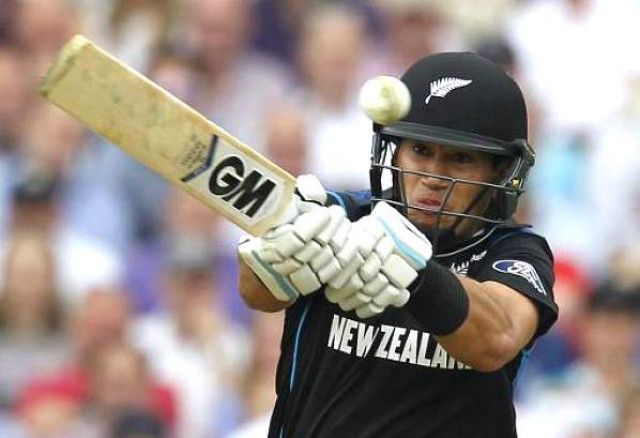
The series, all square at 2-2, concludes in Durham with England and New Zealand needing to score just 324 more runs between them to become the first teams to hit the combined mark of 3,000 runs in a five-match ODI campaign.
Taylor, who has scored 328 runs, including two hundreds, at an average of 109.33, joked he wanted to enjoy his time in the middle before the International Cricket Council introduced 50-over rule changes later this year, notably increasing the number of fielders allowed outside the 30 metre circle in the last 10 overs to five.
"(I'll try to) score as many runs (as possible) until they change the rules," said Taylor.
"I don't want to put any pressure on myself, because I mightn't score any runs tomorrow (Saturday)."
However, the 31-year-old Taylor, a veteran of 163 ODIS, said things were probably as good as they had been in his career for a well-set batsman in 50-over cricket.
"If you get yourself in, it's easier to hit boundaries...I've been thinking about it a lot, and if you take calculated risks you can get to the boundary a lot easier than in the past -- from when I started," Taylor said.
Modern bats, which have more weight in the sweet spot and thicker edges than the blades of a generation ago, increased fielding restrictions and shorter boundaries, have all been cited as reasons for the increasing frequency of huge scores.
However, Taylor said the relatively recent introduction of a ball at each end from the start of a one-day match, rather than one per innings, had also tilted the game in favour of batsmen.
That's because a harder ball comes on to the bat quicker and leaves it faster when well-hit, while without the same rate natural change to a ball throughout an innings, bowlers find it harder to gain reverse swing.
"One thing I haven't heard a lot about is two new balls, because ... the new ball is still hard in the last 15 overs," said Taylor.
"People talk about bats being big. But the ball is quite hard and easier to hit -- reverse-swing is a lost art.
"Maybe going back to one ball could be good as well," he added.
But bowlers can still strike back as England quick Mark Wood's return of one for 49 in 10 overs proved during the hosts seven-wicket series-levelling win at Trent Bridge on Wednesday.
"My role as the attacking option is to fight fire with fire," said the 25-year-old.
"I was pleased with how it went (in Nottingham), but I think I bowled at the right times.
"I bowled when we were trying to take wickets, and the opposition weren't necessarily trying to hit it out of the park straight away."
Wood accepted, a touch ruefully that, for many spectators fun at one-day matches equated to soaring sixes rather than flying stumps.
"Is it fair?" he said."As a bowler, probably not.
"But the crowds are here for entertainment, and they want to see fours and sixes and hear the loud music," Wood added.
"It's a challenge for us as bowlers, but we have to be up for that -- and we'll be up for it tomorrow (Saturday)."


















COMMENTS
Comments are moderated and generally will be posted if they are on-topic and not abusive.
For more information, please see our Comments FAQ